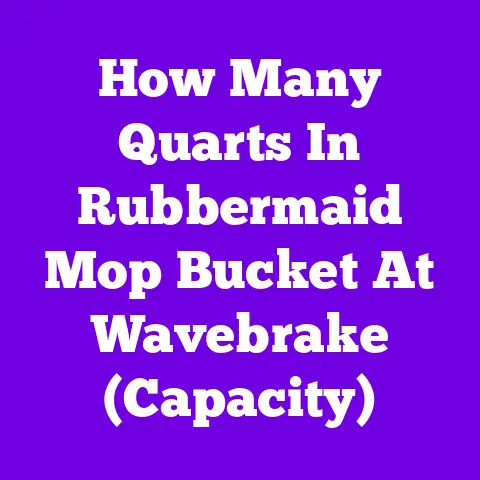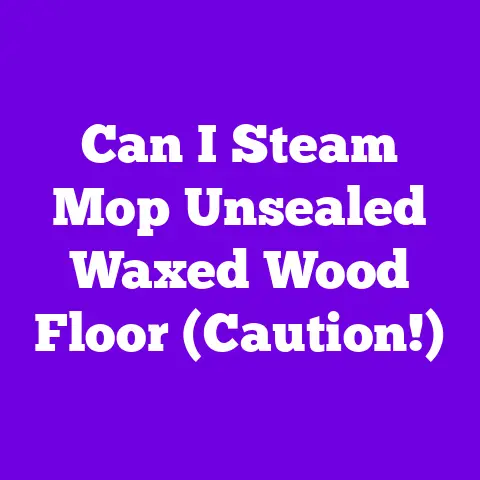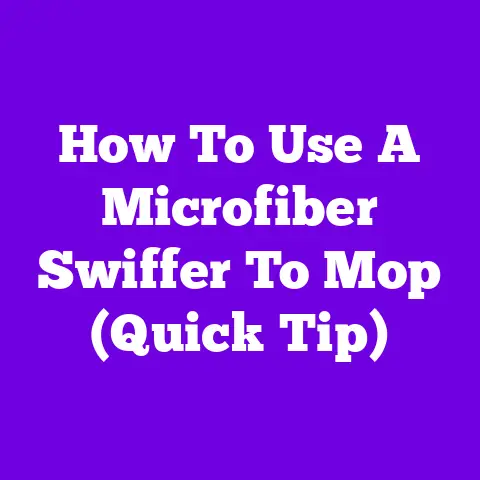How Do You Dry A Ocedar Mop (Fast Drying)
Investing in Your O-Cedar Mop
When you buy an O-Cedar mop, you’re not just purchasing a cleaning tool; you’re investing in your home’s cleanliness and hygiene. Think about it: a reliable mop keeps your floors sparkling, reduces allergens, and even makes cleaning more efficient. So, taking good care of it is essential. Let’s explore the best ways to dry your O-Cedar mop quickly and effectively, ensuring it lasts for years.
Preparation
Before diving into the drying process, let’s gather everything needed to make this task as smooth as possible. Trust me, having everything organized beforehand saves a lot of time.
- Materials Needed:
- Clean water source
- Bucket
- Clean towels
- Fan or hairdryer (optional)
- A well-ventilated area for drying
- An appropriate cleaning solution (if needed)
How to Dry Your O-Cedar Mop
Ever found yourself frustrated with a damp mop that just won’t dry? Let me guide you through some techniques that will get your mop dry in no time.
1. Immediate Rinse and Wring
Why rinse immediately? Well, leaving cleaning solutions and grime in the mop head not only prolongs drying time but can also lead to unpleasant odors. Let’s avoid that.
- Rinse Thoroughly: After finishing your mopping session, take the mop head to a clean water source. Rinse it under running water, making sure to remove all soap and dirt. You might need to use your hands to scrub stubborn areas gently.
- Wring It Out: Once it’s clean, wring out as much water as possible. Use both hands to twist the mop head, applying maximum pressure to remove excess water. If you have a wringer, it’s even better!
Tip: If you’re mopping a large area and the mop head gets too wet during the process, consider rinsing and wringing it out halfway through.
2. Use a Towel for Extra Drying
Think of this step as giving your mop a hug with a towel – it absorbs the extra moisture quickly.
- Lay Down a Towel: Spread a clean towel on the floor or any flat surface. Make sure it’s large enough to accommodate the entire mop head.
- Roll the Mop: Place the mop head on the towel and gently roll it. Press down as you go along to help the towel absorb as much water as possible.
Warning: Avoid using rough or colored towels that might bleed onto the mop fibers.
3. Air Drying
Air drying is crucial because it ensures that all remaining moisture evaporates, preventing mold growth.
- Hang It Up: Find a spot where you can hang your mop with good airflow. This could be a laundry room or an outdoor shaded area.
- Use a Fan or Hairdryer (Optional): If you need the mop quickly, use a fan or hairdryer on a low setting to speed up the process. Keep it at a safe distance to prevent damage.
Tip: If using a fan, place the mop at an angle to maximize airflow over the entire surface of the mop head.
In-Depth Techniques for Quick Drying
Want even faster results? Here are some advanced techniques you might not have thought about:
Using Heat
While not always necessary, heat can be an effective way to dry your mop quickly:
- Radiator or Heater: Place the mop near a radiator or heater, keeping it at a safe distance to avoid damaging the fibers.
- Sunlight: On a sunny day, place your mop outside in indirect sunlight. This natural method is effective but avoid direct sunlight to prevent fading.
Spin Drying
For those with access to a washing machine:
- Check Compatibility: Ensure your mop head is machine washable. Most O-Cedar mops are, but it’s always good to verify.
- Use Spin Cycle: Place the mop head in the machine on a gentle spin cycle. This removes excess water without damaging the fibers.
Extended Maintenance Tips
Taking care of your O-Cedar mop isn’t just about drying it properly. Here are some other maintenance tips to extend its lifespan:
Regular Cleaning
- Deep Clean Periodically: Even if you rinse after every use, give your mop head a deep clean once a month. Use mild detergent and wash according to instructions.
- Avoid Harsh Chemicals: Strong chemicals can break down fibers over time. Stick to recommended cleaning solutions.
Storage Solutions
Proper storage can prevent mold and unpleasant smells.
- Dry Area: Store your mop in a dry area where air circulates freely.
- Avoid Clutter: Keep it away from other cleaning tools that might trap moisture around it.
Common Mistakes to Avoid
Even seasoned cleaners can slip up sometimes. Here are some mistakes you don’t want to make:
- Ignoring Odors: If your mop starts smelling bad even after drying, it might be time to replace the head.
- Improper Wringing: Not wringing out enough water leads to longer drying times and potential mold.
- Wrong Storage: Storing in damp or crowded places can lead to mildew growth.
Proper Cleanup and Finishing
Once your mop is clean and dry, ensure you’re storing it correctly:
- Vertical Storage: Hang it or store it upright to maintain shape and promote air circulation.
- Inspect Regularly: Check for wear and tear regularly so you can replace parts as needed.
Safety Considerations
It’s easy to overlook safety when we’re eager to finish chores, but here are some points to keep in mind:
- Prevent Slips: Make sure no water drips onto floors during drying.
- Electrical Safety: Be cautious with fans or hairdryers around water sources.
- Chemical Handling: Wear gloves when using any cleaning solutions.
FAQs
Q: How long does it usually take for a mop to dry without extra help?
A: Depending on humidity and ventilation, air drying can take 4-12 hours.
Q: Can I use any towel for drying my O-Cedar mop?
A: Use soft, absorbent towels that won’t damage fibers or leave lint behind.
Q: Is machine washing safe for all O-Cedar mops?
A: Most are machine washable but always check specific instructions for your model.
Q: Why does my mop still smell after drying?
A: Residues might be left behind. Rinse thoroughly or replace if it’s an older head.
Q: What if I don’t have space to hang my mop?
A: Try finding an elevated surface where air can circulate underneath or invest in a mop stand.
By following these steps and tips, you’ll have a clean, dry O-Cedar mop ready for action whenever you need it! Feel free to share any additional questions you might have—I’m here to help!






